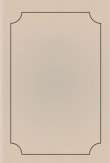قراءة كتاب Notes on the Apocalypse
تنويه: تعرض هنا نبذة من اول ١٠ صفحات فقط من الكتاب الالكتروني، لقراءة الكتاب كاملا اضغط على الزر “اشتر الآن"
strength.
Vs. 12-16.—His attention being arrested, the apostle "turned to see the voice,"—that is, the person from whom the voice came. A glorious vision was presented to his view,—"seven golden candlesticks" or lamp-bearers, in allusion to the golden candlestick with the seven lamps as placed in the tabernacle. (Exod. xxv. 31-40.) "In the midst of the candlesticks appeared one like unto the Son of man," the Mediator, clothed in sacerdotal garments, supplying oil for the light, after the example of Aaron and his sons. (Exod. xxvii. 20, 21.) The "garment" may signify his mediatorial righteousness,—the "golden girdle" the preciousness of his love,—"his head and his hairs white like wool," his purity and eternity,—"his eyes as a flame of fire," his omniscience, by which he searches the reins and hearts, and sees the end from the beginning; "his feet like unto fine brass," the stability of his appointments and the excellency of his providential dispensations,—"his voice," the irresistible energy of his word to quicken, terrify or destroy at his pleasure. (John v. 25, Heb. xii. 26.) "The sharp two-edged sword" will represent his awful justice against the impenitent who resist his righteous authority. "With the breath of his lips shall he slay the wicked." (Is. xi. 4; Luke xix. 27.) "His countenance as the sun shining in his strength," disclosed to the beloved disciple such splendor as to overwhelm him. The like display of divine majesty was insupportable to Saul of Tarsus when on his way to Damascus. (Acts xxvi. 13.) To the workers of iniquity, "our God is a consuming fire." (Heb. xii. 29.) It is a certain truth,—"The vengeance of the gospel is weighter than the vengeance of the law." (Heb. x. 28, 31.) "Let us therefore fear."
17. And when I saw him, I fell at his feet as dead. And he laid his right hand upon me, saying unto me, Fear not; I am the first and the last:
18. I am he that liveth, and was dead; and, behold, I am alive for evermore, Amen; and have the keys of hell and of death.
19. Write the things which thou hast seen, and the things which are, and the things which shall be hereafter;
20. The mystery of the seven stars, which thou sawest in my right hand, and the seven golden candlesticks. The seven stars are the angels of the seven churches; and the seven candlesticks which thou sawest are the seven churches.
Vs. 17-20.—We have the effect of the vision upon the beloved disciple. He who had leaned on Christ's bosom at supper, and who had seen his Master transfigured on the holy mount, was now utterly overwhelmed with the effulgence of his glory. John "fell at his feet as dead." So it was with Daniel, "a man greatly beloved." (Daniel x. 4-8.) But the compassionate Saviour dispelled his fears, as in all similar cases; making known to his astonished servant his supreme deity and real humanity, as "the first and the last," who died for the sins, and was raised again for the justification of his people. (Rom. iv. 25.) He is "alive for evermore,"—become "the first fruits of them that slept." (1 Cor. xv. 20.) He "dieth no more. Death hath no more dominion over him." (Rom. vi. 9.) And so complete is his victory over the king of terrors, the last enemy of the believer, that he hath "the keys of hell and of death." He has the "key of the bottomless pit," (xx. 1;) having triumphed over principalities and powers, making a show of them openly. (Col. ii. 15.) Whether Christ used the word, "amen," to ratify the truth of his immortality; or whether this is an expression by John of his joyful acquiescence in that truth, is not material: we know on satisfactory evidence, that our Lord is a prophet and king, as well as a priest, "after the power of an endless life." (Heb. vii. 16; Rom. xiv. 9.)
John is next commanded to write,—First, "the things which he had seen;" that is, the description of the foregoing vision:—Second, "the things which are;" that is, the actual condition of the church, as delineated in the diverse characters of the seven churches addressed, as in the next two chapters:—Third, "the things which shall be hereafter:" that is, the prophetical part of the book, from the beginning of the fourth chapter to the close, as containing the prospective history of the church and of the nations, as she was to be affected by them, or they by her, till the consummation of all things. This is the division of the book made by the divine Author himself, and it is a natural and intelligible one. All attempts of learned and pious men by other divisions to render this mysterious part of the Bible more clear to the unlearned reader, tend only to display the ingenuity of the writers,—not to say their temerity, while they "darken counsel by words without knowledge." Such artificial divisions are as unfounded, in the apprehension of sober expositors, as the attempts of impious Arians and others, to turn the historical narrative of the creation and fall of man into an allegory!
The meaning of the "seven stars and seven candlesticks" is then explained to John. The word, "are," is used in a figurative sense, and not to be taken literally. It means here, symbolize, represent or signify. It is to be interpreted in the same sense as in the following places of sacred Scripture:—"It is the Lord's passover." (Exod. xii. 11.) "That rock was Christ." (1 Cor. x. 4.) "This is my body." (Matt. xxvi. 26.) None but a Papist will have any difficulty here, or perhaps,—a Lutheran!



